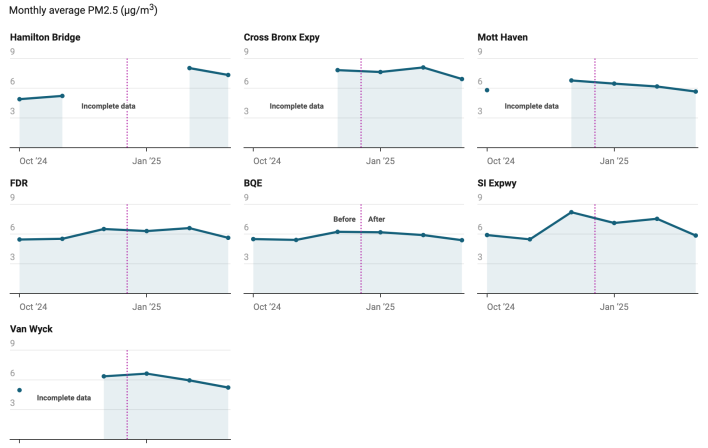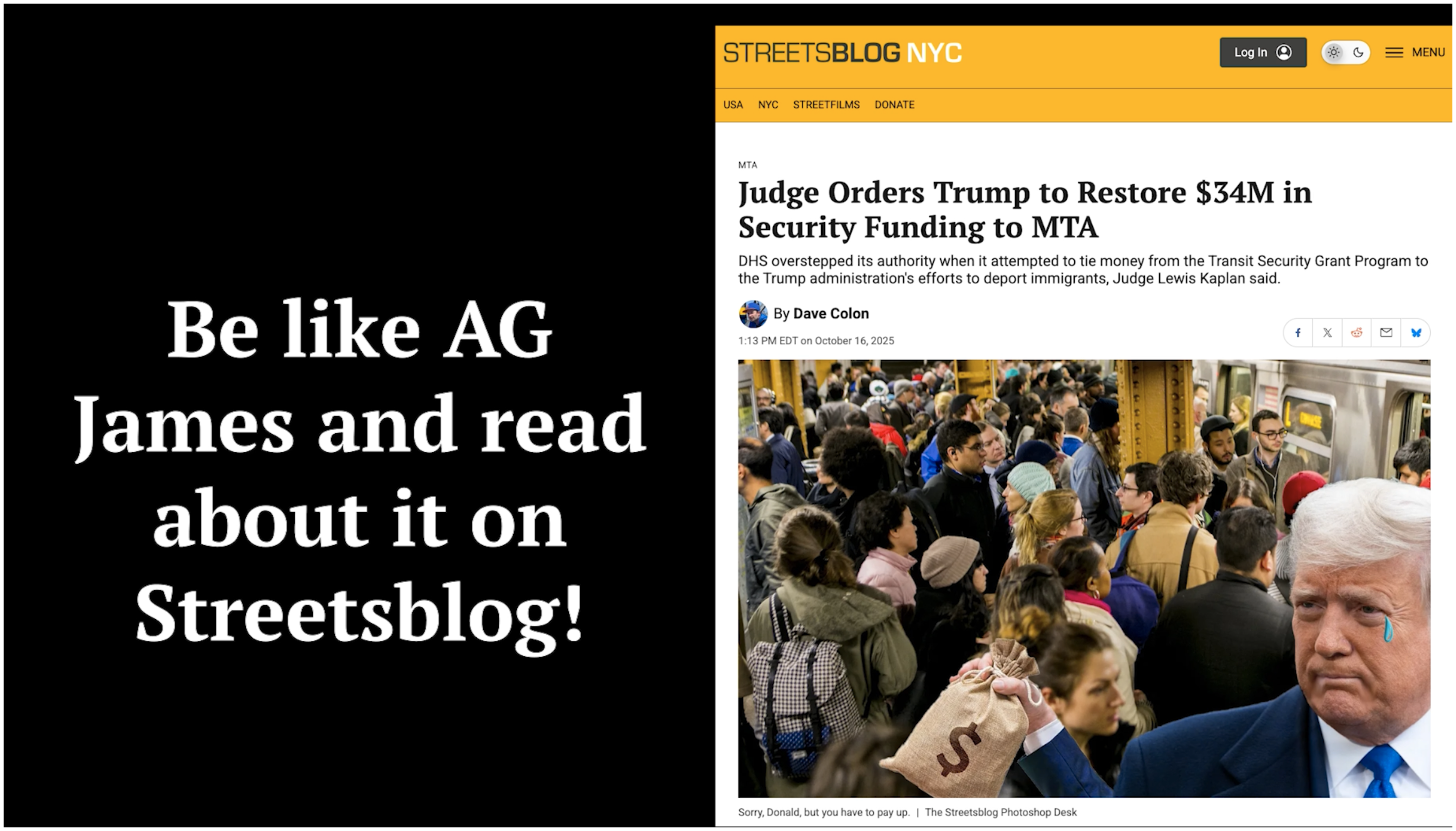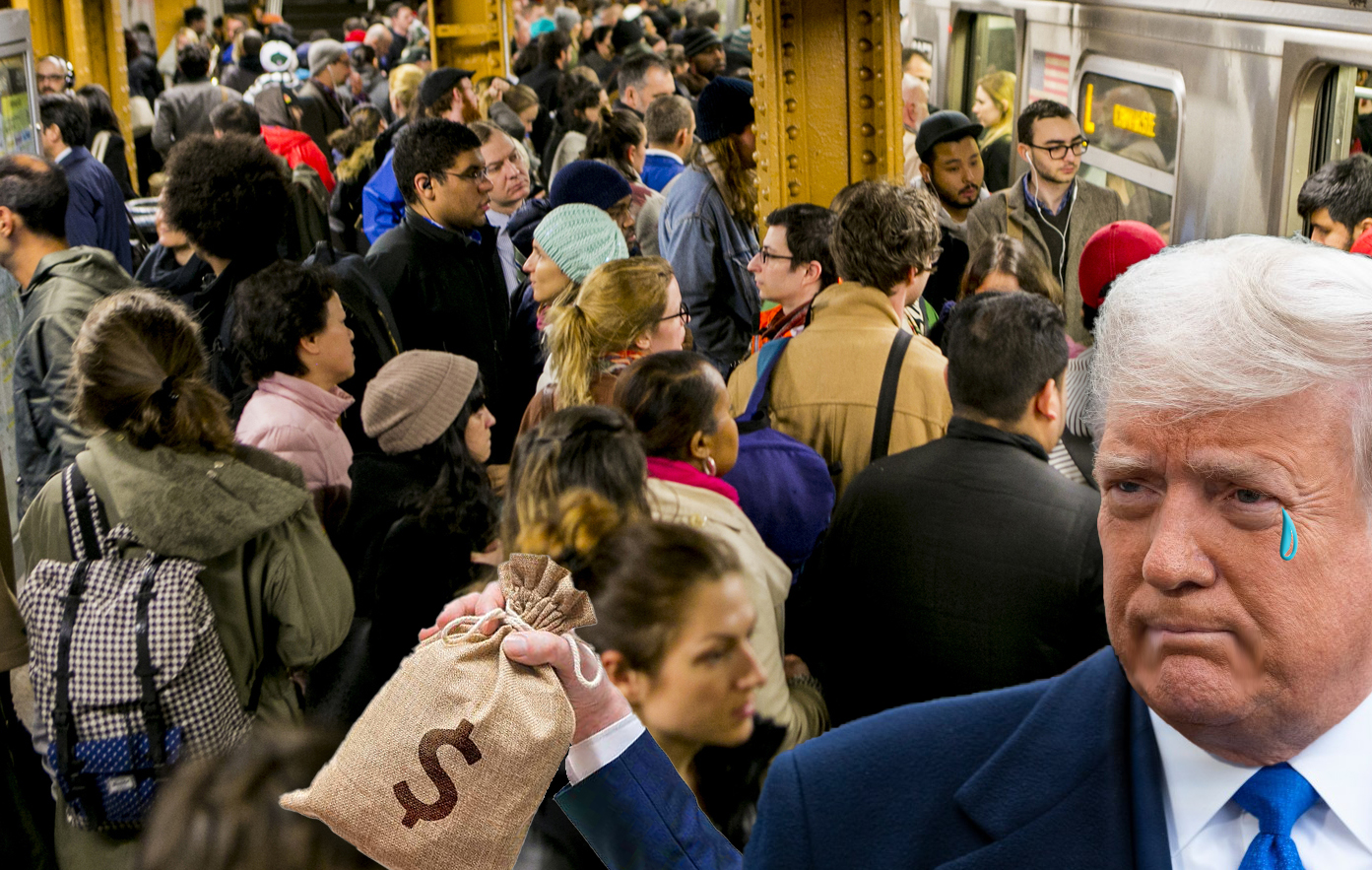Breathe easy, New Yorkers.
Air quality has improved or remained steady across the five boroughs since congestion pricing launched in January, according to a new batch of data released by the city Department of Health — another sign that the traffic toll is delivering a better city.
The Department of Health and Mental Hygiene quietly released a batch of air quality testing data officials collected to determine how congestion pricing has impacted local air pollution. So far, the agency said, things are going well:
"In this initial look at air quality data from the first three months of congestion relief tolling, we observed steady or decreasing levels of PM2.5 at most sites, both inside and outside the tolling zone, including sites that were predicted to have traffic increases as a result of tolling," the agency wrote.
PM2.5, also known as fine particle air pollution, is a pollutant found in vehicle exhaust, home heating emissions from furnaces and wildfires. Excessive exposure to it can cause or exacerbate issues like asthma and heart disease.
Because congestion pricing was predicted to reroute drivers around lower Manhattan as they tried to avoid paying the toll, the MTA's environmental assessment of the toll also predicted increased levels of PM2.5 in places like the south Bronx and Staten Island. The MTA agreed to fund a series of mitigation efforts to address the forecasted pollution, including for upgrades to pollutant-spewing refrigeration trucks in the Hunts Point produce market.
In the first three months of congestion pricing, however, it simply hasn't been the case that air pollution is rising outside of Manhattan.
Air quality monitors the city installed at the Cross Bronx Expressway, in Mott Haven and by the Staten Island Expressway all show that PM2.5 levels were lower in March of this year than they were in December of last year, the DOHMH report said.

And of course, as traffic has dropped by at least 10 percent every month south of 60th Street in Manhattan, PM2.5 has dropped at testing locations inside the congestion relief zone and at the East Rover crossings leading into Manhattan.

DOHMH stressed that it was early in the game and that it would continue to monitor air quality throughout the year, in order to get a better understanding of how congestion pricing is impacting the city. One encouraging factor though, was that the agency noted the PM2.5 usually increases in colder months because of emissions that come from buildings boilers turning on for the colder weather.
"[T]hese data don’t let us draw final conclusions about the toll’s effect at this early stage. The work is ongoing - a comprehensive study will require 12 months of data before and after the start date," the agency wrote.
Advocates for congestion pricing also reacted to the news with a measured tone since it's so early in the game, and they want to see what else happens as the city makes streetscape improvements in reaction to lower traffic numbers and the promised mitigation efforts go forward.
"I think we need to analyze the data over a longer period of time to truly gauge the effect of the program," said Tri-State Transportation Campaign Executive Directoe Renae Reynolds. "We need to see how various other factors impact the results to really understand how the data is trending, and more importantly we need to see how mitigation investments, how capital improvements, how improvements to our streetscape that optimized alternative modes of travel other than driving play a role in reducing emissions further."
Still, the numbers are yet another moment showing congestion pricing having a positive impact on the city. Six months since the traffic toll began, crashes and pedestrian injuries are down in lower Manhattan, foot traffic has increased in some lower Manhattan neighborhoods, Broadway and the larger lower Manhattan economy have thrived and traffic has not spilled over onto bridges that avoid sending drivers to lower Manhattan. Also Walt "Clyde" Frazier said he likes it.
The MTA therefore saw the early air quality data as another positive sign for the toll.
“The New York City Community Air Survey (NYCCAS) has been the gold standard for over 15 years in terms of collecting and analyzing air quality data," said MTA Deputy Chief for Policy and External Relations Juliette Michaelson. "As we’ve already seen with reduced traffic, faster buses, and value to businesses, projections of positive impact from congestion relief have proved to be reliable, and six months since the start, New Yorkers and visitors are realizing those material benefits."






